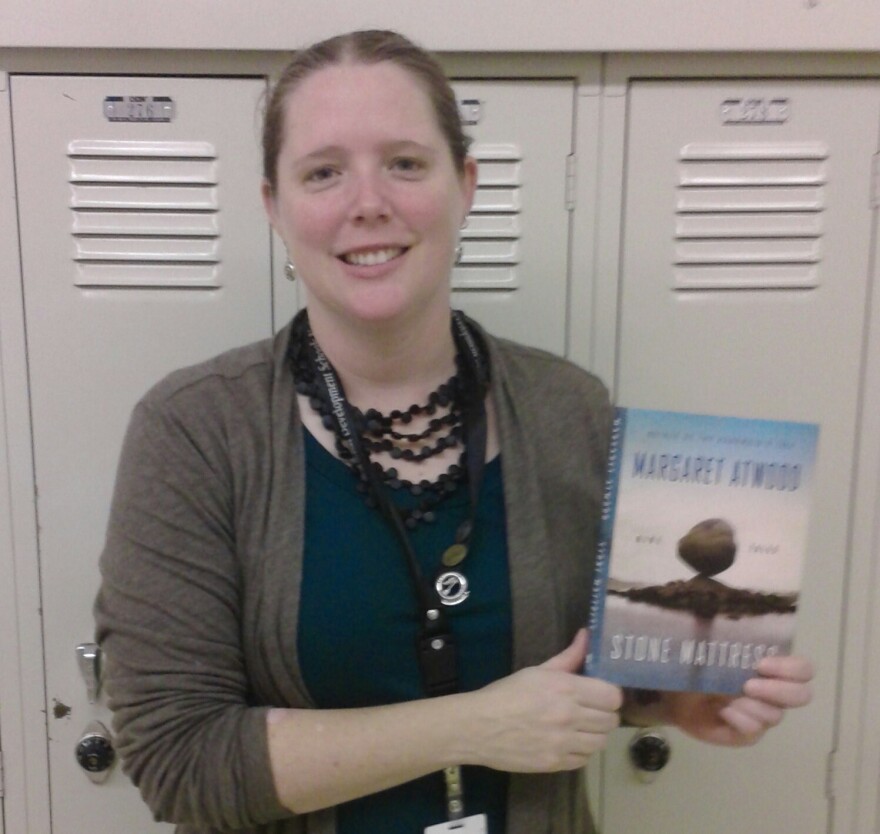I’m not sure if Margaret Atwood’s writing improves as she ages, or my appreciation for her writing improves as I age. I’ve been a loyal fan of Atwood since I read The Handmaid’s Tale over twenty years ago--and her latest work solidifies my belief in her genius.
In this collection of short stories titled Stone Mattress, the nine tales include a freeze-dried groom, a riot calling for the destruction of nursing homes, a misunderstood vampire (who may have been reincarnated as a dog), a campy horror story, and a series of three intertwined stories revolving around writers.
In the acknowledgements, Atwood writes: “calling..a piece...a tale removes it at least slightly from the realm of mundane works and days, as it evokes the world of the folk tale, the wonder tale, and the long-ago teller of tales.” These tales absolutely evoke something beyond the mundane -- even if it is merely the joy of language, the magic of forgiveness or the wonder of aging.
Atwood’s prose shines when describing details or profound observations of life. Consider the first line of the book where she describes the weather with: “the freezing rain sifts down, handfuls of shining rice thrown by some unseen celebrant.” She makes a mundane topic like the weather seem fascinating with her words.
Then, she moves beyond the beauty of precise description and moves us into an observation about human nature. She wrote: “There’s something brisk about being out in a storm--something energizing: it whisks away the cobwebs, it makes you inhale.” This constant interplay between crafting images and analyzing humanity means these stories are not just stunningly crafted, they resonate with us at the base of our souls, and remind us what it means to be human.
In fact, in one of the three intertwined stories, a character notes “experiences were what you got when you couldn’t get what you wanted.” This perspective reminded me of the value of aging and having experiences.
Aside from the content and the craft, Atwood’s allusions to other texts are subtle and even funny. She references poetry by Byron, Keats, and Tennyson, but she also nods to Frankenstein and riffs on Hamlet and Richard the III.
The titular story, “Stone Mattress,” was first published in The New Yorker in 2011--it chronicles a cleverly serendipitous revenge plot for a rape committed decades earlier. The protagonist in that story might seem cold and calculating, but I like to think of her as adaptable and concerned with self-preservation. This story demonstrates Atwood’s knack for making flawed characters accessible to readers--and forgivable, but not forgettable.
While the first three stories are linked--I’d hoped all nine would be (much like Winsburg, Ohio or Olive Kitterage) --I quickly readjusted my expectations and enjoyed each gem for what it was--a study of humanity through the lens of one of the greatest writers of our time.
The book, Stone Mattress, is published by Random House LLC. The author, Margaret Atwood, will be speaking in State College at the State Theatre on November 12th at 7:30 p.m. This event is free and open to the public.
Our reviewer, Kate Hoffman, is an English teacher at State College High. She recently won a High School Teacher of Excellence Award through the National Council of Teachers of English.




